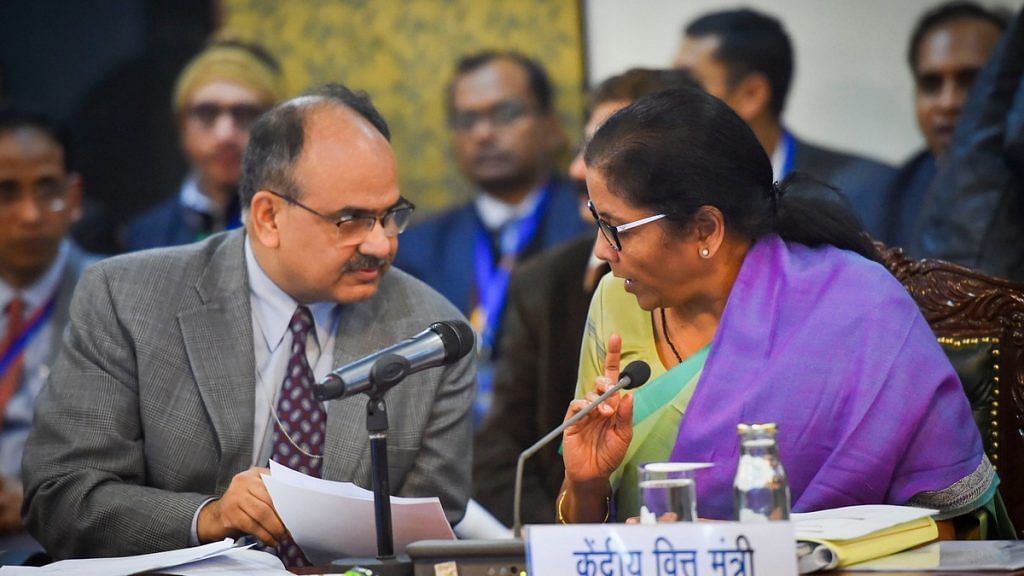Macroeconomic stabilisation policies can sometimes be quite counter-intuitive. When the economy slows down, tax revenues also decline. A civil servant would believe that it is time for her to ramp up efforts to increase tax collection. She may believe that government should spend more and so she must collect more taxes to facilitate greater public spending during the slowdown to push demand up. This thinking may be quite wrong.
Take for example, the current slowdown in growth. It has also been accompanied by tax collections lower than their budget estimates. Indirect taxes have fallen short of the targeted levels, which appear to have been excessively optimistic after the introduction of the GST, particularly when a new tax was clearly taking time to settle.
The growth slowdown has been accompanied by a slowdown in consumption demand. There are three main ways in which consumption demand can increase. Either domestic private consumption of households increases, or the government spends more, or the rest of the world buys more from India.
There may be an argument in favour of rate cuts, from a demand perspective, but not for a rate hike.
Also read: Cutting income tax and raising GST makes no sense. Both need to fall together
The consumption conundrum
Consumption demand of households can increase when households have more money. So, if a large number of people are in the lower income tax bracket and paying some income tax, let’s say people earning Rs 8-12 lakh a month and consuming most of their income, then as soon as income tax rates are reduced, this can increase consumption demand. Very often, at low levels of income, the propensity to consume is quite high. Out of the 5.87 crore income tax payers in 2018-19, more than half may fall in the category in which they would consume more if taxes were cut.
But it may be argued that in a country of more than a hundred crore, higher consumption by two or three crore people will not solve the demand problem. In addition, if the problem is a slowdown in rural demand, then considering that income tax is not levied on agricultural income, there would be only a small benefit to this step.
One can argue that since everyone pays GST on the goods and services they buy, consumption can be increased more effectively when GST rates are cut. It leaves people with more money to buy more goods and services. As a consequence, if taxes are below expectations, and the reason is a shortfall in demand, policymakers should not increase taxes. They should cut them to spur demand. Higher spending by consumers will have a multiplier effect and increase consumption demand. Through that, tax collections will also increase.
The difficulty with letting civil servants who focus on tax collections run the economy is that they fail to see that their actions can give the Indian economy a negative multiplier effect. Imagine a situation in which taxes are raised so that the tax-to-GDP ratio increases, without a commensurate increase in government expenditure. This is a likely scenario and tax officials will be happy if this happens. It is likely because government spending is difficult and takes time, and procurement processes are tedious. An increase in taxes in such a situation can lead to a demand contraction by reducing the amount households spend. People pay more taxes and spend less. Those who were earning their livelihoods depending on these people then earn less, and spend less. This multiplier effect gives the system a negative shock and a demand contraction greater than the initial tax increase. Increasing taxes is typically a contractionary move meant to cool down an overheating economy.
The logic of macroeconomic stabilisation policies is that when the economy is overheating, policymakers increase taxes and reduce spending to reduce demand in the economy. On the contrary, when there is low demand, the fiscal stance is expansionary — the government reduces taxes and spends more to push up demand. If the government has been fiscally prudent in good times, and not run up large debt and deficits, then in bad times, it is able to run larger deficits. A commitment such as to fiscal stability is not a commitment to a fixed level of fiscal deficit, but one to what is cyclically required as well as what is prudent. Of course, this requires that during good times, when GDP growth was high, the government was either running fiscal surpluses or low fiscal deficits.
In countries that use fiscal policy as a tool for macroeconomic stabilisation, fiscal policy and tax policy is not made by tax officials. In India, tax policy is made by tax officials. This would be inappropriate for macro-stabilisation of the Indian economy. All decisions about changes in tax rates should be made by policy makers, not by tax officials.
The author is an economist and a professor at the National Institute of Public Finance and Policy. Views are personal.
Also read: Fall in GDP growth needs to be reversed before it becomes a sustained downward spiral
